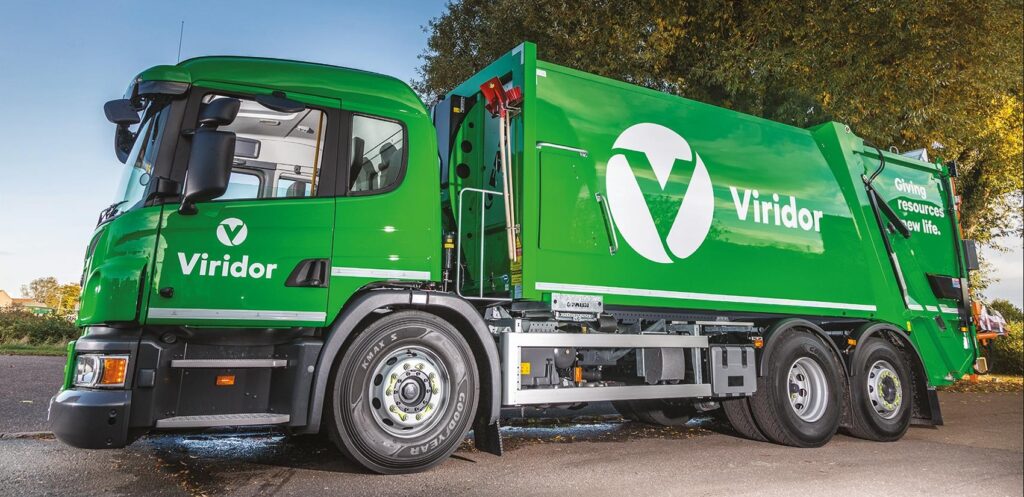Speaking with Oliver Wilson, technology manager at Make-a-Wish, ERP Today hears about the charity’s journey to the cloud with Microsoft and Nerdio.
Although progress in modern technology shows that medicine is making major steps forward in healthcare, sadly, there are still millions of people, including children, who are fighting life-limiting and life-threatening conditions around the world. Make-A-Wish Foundation estimates that 1.25 million children each year are diagnosed with a critical illness, severely affecting their happiness and childhoods.
Despite the statistics, there are clear examples of how people can come together to offer charity and support, to make the lives of the affected children brighter and more fulfilled. As such, foundations like Make-A-Wish provide vital work to reach that goal.
However, it is also clear that to stay afloat with the vast amount of work that the foundation has to complete, it also needs to adopt and practice technological literacy, so that the employees, donors and volunteers can focus on things that truly matter – the children.
Facing the problem of legacy systems
Make-A-Wish UK is a UK-based charity founded in 1986 that, just like the Make-A-Wish Foundation International, “grants wishes” to children and young people fighting critical conditions.
Oliver Wilson, technology manager at Make-A-Wish, joined the company as a technology manager in 2021 to “lead a period of digital change through a BAU [business-as-usual] IT delivery strategy”. As the COVID pandemic hit, it became clear that the foundation operated on a large stack of legacy systems with “boxes in cupboards that were remote from computers”, as well as virtual machines (VMs) on the hypervisors, which, in the words of Wilson, “don’t really need to exist anymore”. This posed a challenge for the workers who had to pivot to remote working and post-pandemic, a decision was reached to undergo the digital transformation.
The Make-a-Wish IT team decided to put its resources into the Microsoft cloud VDI service, Azure Virtual Desktop (AVD), and implement a BYOD strategy to offer staff and volunteers the flexibility of remote work and virtual workspaces. At the time, all the company’s on-premise systems were “thankfully, still in support”, so it was possible to utilize the help from Foundation IT, a managed services partner, that Wilson chose to work with for this project, to build its cloud infrastructure and guide the digital strategy.
Change of course and scalable ambitions
In the first two years of the digital transformation, Wilson explained that the process allowed the team to conduct “almost a spring clean of the whole system”, moving some of the core infrastructure over with the help of Foundation IT, including domain controllers and legacy systems that needed to remain for regulatory processes.
Considering heavy fluctuations in the number of users based on how many volunteers need to access the system in a given day, the team began evaluating what the next stages would be and how far that digital transformation could go for the charity. In 2023, the Make-a-Wish IT team decided to lead the project not just as part of the IT transformation, but also the organization as a whole.
“[…] The reasonable question after that was, how far can we push this? Are there elements of this that we can leverage for our end users? Because […] if we can make a scalable, better user experience through perhaps a virtual desktop, that’s probably a lot more effective than trying to rely on the BYOD with locking [the users] down [due to security concerns],” Wilson shared.
This is when the Make-A-Wish IT team decided to seek a third-party solution that could help scale its digital transformation with Microsoft and manage the “inherent complexities” of AVD by tailoring the system “toward end-user cloud adoption” with the capability to manage it on any device, rather than just traditional computers.
“We’re going through a massive bounce back of [things like] fundraising, the wishes granted, in-person fundraising is a massive thing. And obviously with that comes an increased headcount,” the technology manager explained.
“Having all of that solid foundational technology is really key for us to be able to start delivering that staff experience which translates into more wishes granted, which for us is kind of the key thing, right?”
Channeling ease of use through the right collaboration
With the support and guidance from Foundation IT, Make-A-Wish partnered with Nerdio, a provider of management solutions for AVD, to implement its Nerdio Manager for Enterprise platform, based on the automation capabilities and scalability of virtual machines.
Nerdio Manager for Enterprise is a unified management platform for Microsoft DaaS and physical endpoints. One of its unique features is that it does not replace Microsoft’s native components but enhances them with enterprise capabilities and extends native admin experience to simplify management, ensure efficient operations and lower Azure compute and storage costs via automation.
After doing preliminary testing of the platform to address any pain points before go-live, Wilson and the IT team launched the UAT process and provided end users with drop-in sessions, training materials and overall internal communication to ensure that the integration process is smooth and seamless.
The process proved to be successful, and from that point onwards the company no longer needed to worry about the security concerns that relate to BYOD approach. Now, end users can use any device they wish because the virtual desktop allows everyone to operate in the same session in the cloud.
Continuous enhancement and support
Today, the companies continue to collaborate and enjoy the benefits that rose from the partnership. Specifically, Wilson emphasized that with Nerdio, the foundation operates on 100 percent cloud and has the ability to deploy new systems and updates anytime it needs.
“If we were deciding to go and deploy new systems, let’s say, tomorrow, […] we can spin up resources, and… within 20 minutes, [I can] have a full new host pool, resources and infrastructure ready for end users to log into, which isn’t something we’ve been able to replicate with other suppliers or even [reach] a talking point with other people,” Wilson said.
Additionally, Wilson highlighted how his team does not have to “spend hours learning a complicated third-party hypervisor system”. The unified interface of Nerdio allows for the team to “control the whole estate” on a single web page, removing the unnecessary complexities in the process.
He added: “My team [is] of a relatively entry-level when it comes to their [work] experience. [It might be] the first time that they’ve even got to [work with Azure], which is perfectly fine, right?
“That’s a good learning opportunity for them. Starting someone off managing systems through Nerdio is a way for them to go, because it’s just login to the web page. There’s 100 more options that they can pick up different activities [from], but they’re laid up sensibly.”
On Nerdio’s side, the feedback on the partnership is just as positive. Gavin Connolly, the field CTO at Nerdio, shared that his company’s goal was to offer Make-A-Wish the necessary stability and reliability on the system, supported and nourished through continuous discussion and feedback. According to Connely, partnerships like this one offer a mutual benefit to the customer and the vendor at the same time.
Connolly stressed: “Nerdio wants to be customer-focused, and we have our ‘ear to the ground’, so-to-speak, to make sure that we’re taking feedback from Oliver and his team on board and from partners like Foundation IT.
“That is to make sure that, ultimately, everything, all the decisions that we make, whether it be from a product, perspective or new features, that a lot of that comes from customers like Oliver and helping them with their specific needs and use cases that bridge the gaps that they need.”
To the cloud and beyond
Since launching this digital transformation journey with Microsoft and Nerdio about three years ago, Make-A-Wish has officially moved the last VMs across to cloud in May 2024. Today, in the charity’s office in Reading, there is “nothing with any compute on it”. Everything is hosted within the Microsoft Azure environment, from database controllers to database servers.
Because of that, the organization has the capacity to grow “as and when it chooses”, and, according to Nerdio’s statistics, reduce its Azure bill by 40 percent each month with Nerdio’s auto-scaling capabilities, as well as decrease the overall energy consumption. He added that the Azure estate is performing as efficiently as it can and the charity can also identify spending patterns “within some of [its] vertical systems”, be it Microsoft SQL servers or the old domain controller.
On the benefits that the Make-A-Wish IT team gained, he shared:
“[It is] incredibly important for us to have the ease of use [in the system]. I don’t want my team sat in PowerShell for eight hours a day. That’s a waste of their time. I want my team to deliver an amazing service for an amazing charity, making sure that when someone has an issue, my team are focused on resolving that and getting that person back to granting magical wishes for children with life limiting or changing conditions.”
Next, the Make-A-Wish IT team is planning to leverage its cloud-based flexibility and enhance the organization’s systems, such as CRM and current infrastructure, aiming to improve the experience for the charity’s supporters and, most importantly, children and their families.
As the case of Make-A-Wish shows, in the world of unpredictability and challenges that businesses face, the right technological stack can ease off the burden of delays and inflexibility. Because of that, the foundation can continue providing the vital work it does for children without being held back in its ambitions by the hurdles of outdated technology.






